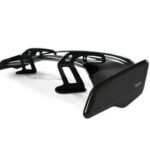Choosing the right setup for your car tuning software on a Windows machine can be tricky. This article explores the pros and cons of using a virtual machine (VM) versus dual booting for running Windows-based ECU tuning applications on a system primarily running Linux. We’ll focus on performance, stability, and file access to help you decide which approach best suits your needs.
Virtual Machines for Car Tuning Software
Running a Windows VM on a Linux host offers the convenience of seamlessly switching between operating systems without rebooting. This allows for quick checks on maps or loading files from forums within the tuning software. However, performance and stability can be concerns, especially when dealing with resource-intensive applications. The laptop’s specifications, including the i5 6200U processor and 8GB of RAM, should be sufficient for running a VM, but adding more RAM could improve performance.
A key consideration with VMs is file access. Since VMs are sandboxed, accessing tuning files stored on the Linux host requires specific configuration. Sharing folders or partitions between the host and guest operating systems is possible, allowing for backup and sharing of tune files.
Dual Booting for ECU Tuning
Dual booting provides a native Windows environment, ensuring full compatibility with USB devices and drivers crucial for various tuning software. This eliminates potential compatibility issues that might arise within a VM. Direct access to USB-Serial cables (like Prolific) and Ethernet connections for faster data logging downloads is also guaranteed.
While dual booting offers stability and compatibility, it requires rebooting to switch between operating systems, which can be inconvenient for quick tasks.
Choosing the Best Approach
The optimal choice between a VM and dual booting depends on individual priorities. If seamless switching between operating systems is paramount, a VM with sufficient resources is a viable option. However, if stability and guaranteed compatibility with USB devices are critical, dual booting is the preferred solution. Upgrading to a larger SSD is recommended regardless of the chosen method to improve overall system performance.
Considering Hardware Upgrades
Regardless of whether you choose a VM or dual booting, upgrading to a larger SSD is highly recommended. This will improve the overall system responsiveness and loading times for both the host and guest operating systems. Additional RAM may also be beneficial for running a VM, especially if you plan on using multiple resource-intensive tuning applications simultaneously.

